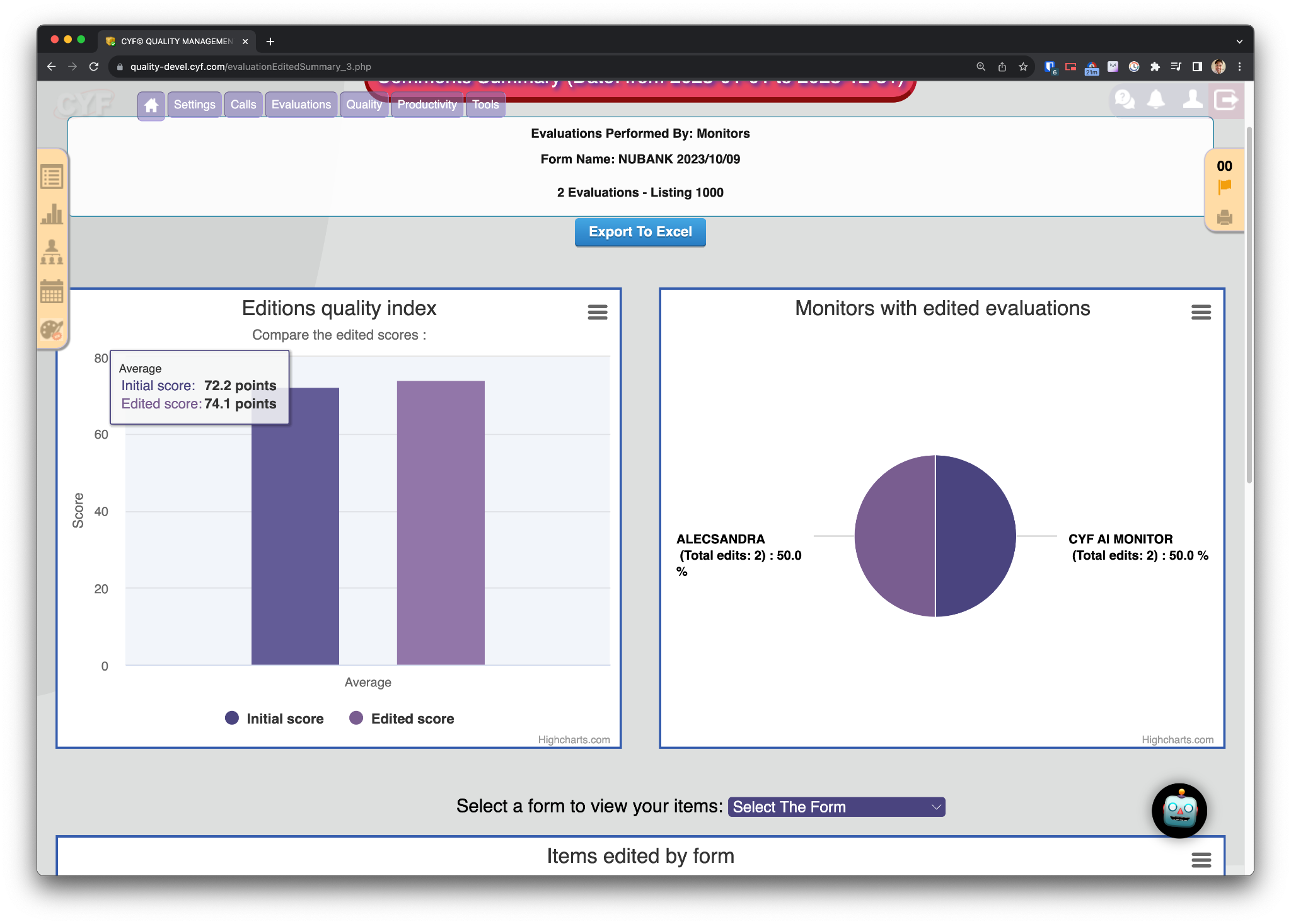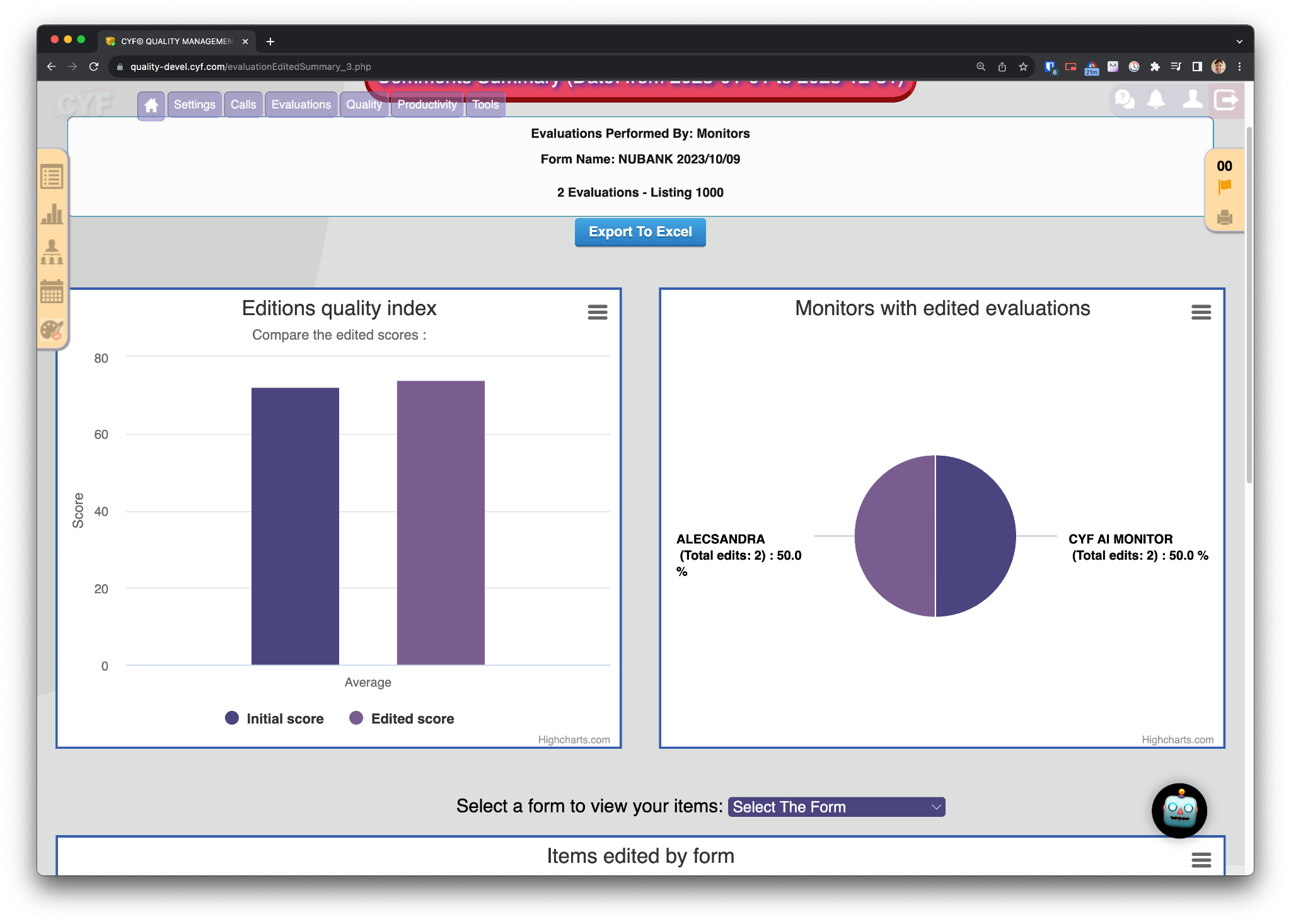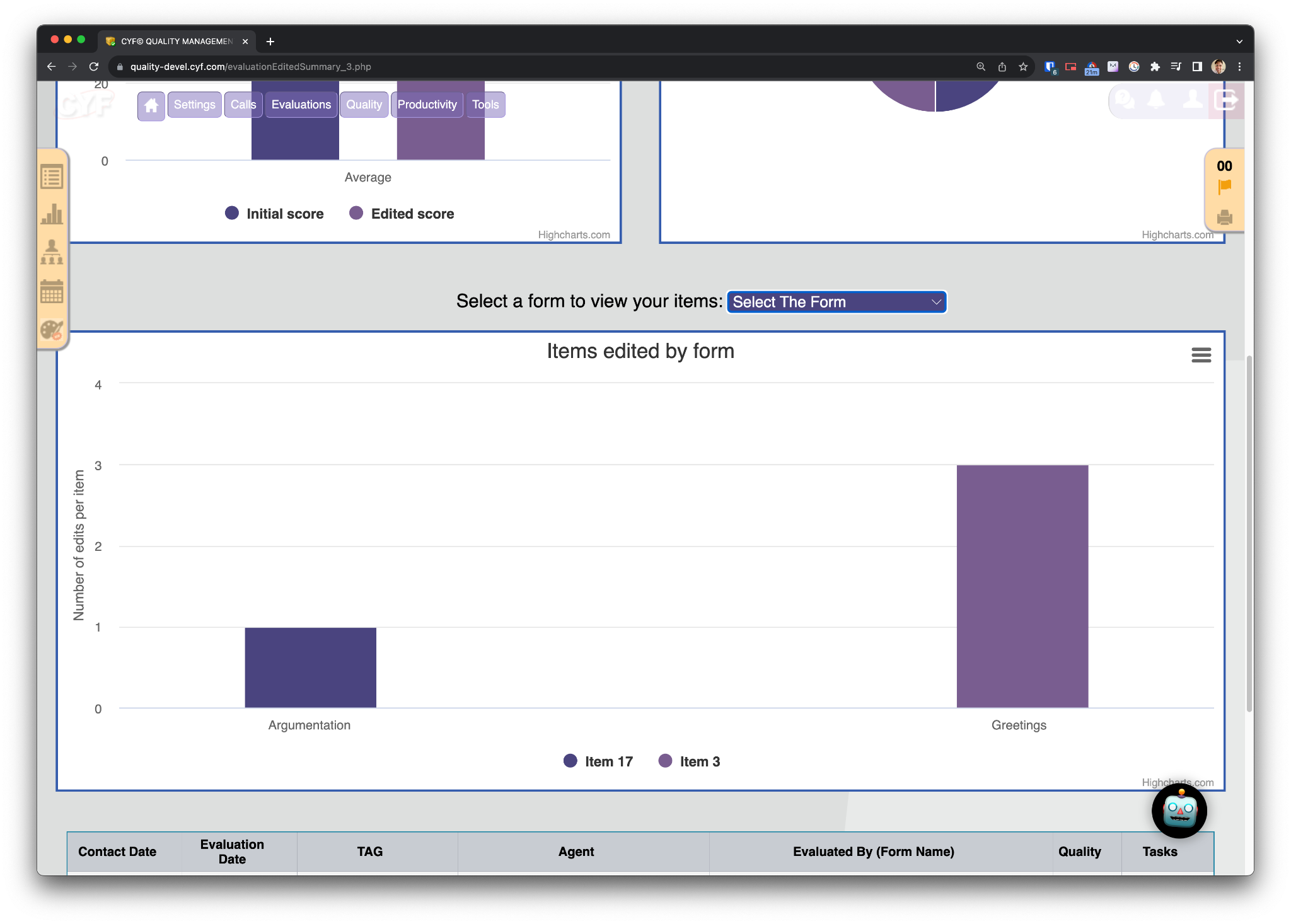The ability to review and edit evaluations plays a key role in the quality monitoring process, which is why we are excited to introduce 3 new charts in the evaluations report.
1. Visualizing the Evolution of Quality
The first graph makes it possible to evaluate the impact of the edits. Now, we can track the average grade before and after edits. This provides a clear and instant view of how our interventions are impacting the quality of evaluations.

2. Identifying the Most Engaged Employees
Our second edition is a chart that helps quantify which monitors are most involved in editing evaluations. By highlighting employees who contribute most to improvement, we can properly recognize them and create opportunities to share best practices. This transparency fosters healthy competition and can lead to team-wide improvements.

3. Focusing on the Most Impacted Areas
Last but not least, our third chart allows us to evaluate the most frequently changed items in edits. This information helps us direct our efforts to the areas that most need attention. By understanding which parts of evaluations are most susceptible to edits, we can tailor training and resources to improve quality from the start.

These three additions to our Evaluations Edited Report aren’t just cosmetic improvements — they’re powerful tools to guide our continuous improvement efforts.
How do these improvements impact CYF Quality AI?
Furthermore, this improvement in the Evaluations edited report has a direct impact on the validation of automatic monitoring. Now, monitors will have the ability to make edits, when necessary, in the evaluation generated by artificial intelligence. In doing so, they will be able to apply their knowledge and judgment to improve the accuracy of evaluations and, as a result, improve the quality of service provided. The three new graphs become essential tools for analyzing areas in which automatic monitoring can be optimized, allowing a more strategic approach to improving the assertiveness rate of automatic monitoring. This synergy between human intervention and automation promises to further increase the quality of our processes.